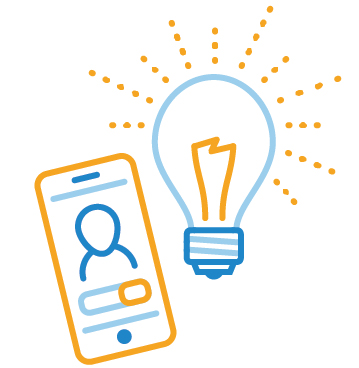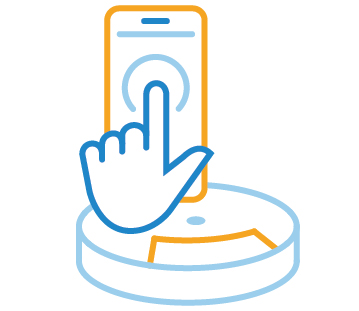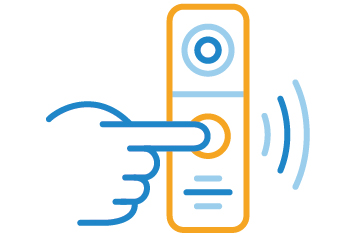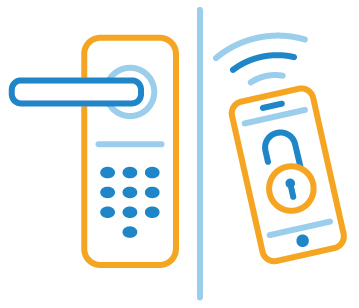Smart Home Capabilities
May 23rd, 2019 By Meg CannistraShare on FacebookShare on Twitter
This guide has been designed and optimized for Web Content Accessibility Guidelines 2.0, and was built to meet the needs of those with visual and hearing disabilities. See our disclosure below for more information.
Smart home technology has come a long way in the last few years. No longer just a novelty or relegated to home security systems, smart devices can help the elderly and those with disabilities live independently without having to pay a premium for products specific to their needs.
Whether you’re purchasing smart devices for yourself or for a family member, there are a few things you’ll want to consider.
Your Needs
Before everything else, consider what you want to accomplish with smart home tech. Video doorbells, for example, are great for those with limited mobility or cognitive impairments because you can see who is at the door without getting up, and a family member can also receive notifications, communicating with whoever is at the door via their smartphone. Understanding what works best for you and your family will help you make the right choices when shopping for smart devices
Ease of Use
Smart devices only work if you know how to use them. Research how the tech you’re interested in works, and be realistic about if it’s something you or a family member can learn how to use. Learning to use smart devices is relatively straightforward, but all of them will take some time getting used to — especially since most of them require you have a smartphone or tablet to control them. Choose smart devices that suit your needs and will most realistically fit into your lifestyle. If it’s too difficult, consider looking into a different brand or one with fewer bells and whistles
Budget
While usually less expensive than devices marketed to those with disabilities, smart home tech can be pricey. Compare prices and set a clear budget after you’ve done some research. Also, look out for discounts. Many brands offer deals on both old and new products, so check for coupons or buy around holidays if you can wait
Installation
Most smart devices aren’t difficult to install. Since many are wireless it’s usually just a matter of downloading an app onto your smartphone, setting up Wifi (or your network standard of choice), and making sure it has a power source. That said, some might require a deeper tech knowledge to set up. Most brands include step-by-step installation guides — some even connect you with a customer service rep to help lead you through the process. But if you can’t install it yourself, some brands offer expert installation by trained technicians.
There are many smart devices on the market that can help improve the quality of life for the elderly and disabled. To get you started, below is a list of some of the most popular devices on the market and ways in which they can help you create a safer home for you or your loved ones.

Smart light bulbs
Smart light bulbs can be programed to turn on or off at scheduled times or controlled via your smart device or hub. You can connect them to your doorbell or phone and they will flash when there’s activity. This is helpful for those who are deaf or hard of hearing since they can see the doorbell ringing or a call coming in.
Smartphone/tablet required to operate: Yes, if you don’t have a smart hub

Smart hubs
One of the most ubiquitous smart devices on the market, smart hubs function as the brains of your automated home and let you control all your devices from one centralized location. For those who with low vision or limited mobility, a smart hub that comes equipped with a voice assistant makes it easy to hear your schedule and to-do list, as well as unlock the door, turn on the lights, and make phone calls without having to get up.
Smartphone/tablet required to operate: No, but it may be required for setup

Robot vacuums
Robovacs are automated vacuums that clean floors without requiring you to actually get up and clean. It turns on with the push of a button on your smartphone, or via voice command if you have a smart hub. Some robot vacuums even map your home’s layout to optimize the cleaning experience. If you or a loved one has a disability that makes it difficult to clean, a robot vacuum might be a good option for your home.
Smartphone/tablet required to operate: Yes, if you don’t have a smart hub

Video doorbells
If you want to invest in security, you can’t go wrong with a video doorbell. They affix near your front door and alert you (through your smartphone or hub) when someone is on your doorstep — without you having to get up to see who it is. Most also offer two-way communication. This makes it easier to address who’s there without having to actually open the door. If you’re purchasing one for a loved one, you can program it so that you receive alerts when they get visitors.
Smartphone/tablet required to operate: Yes, if you don’t have a smart hub

Smart locks
Smart locks are another security investment that will help keep you or your family’s home more secure. For those with limited mobility, smart locks let you lock and unlock your doors with the push of a button or a simple voice command. Many smart locks also let you grant keyless access to friends and family who might stop by often.
Smartphone/tablet required to operate: Yes, if you don’t have a smart hub
Conclusion
Smart home technology is capable of making daily tasks more manageable for the elderly and disabled. Home automation is only going to expand in the future, with more devices hitting the market meaning a greater diversity of tech that will benefit those who need it most. When looking for smart gadgets, keep your goals in mind and purchase tech you know how to use and works best for your family.
Accessibility Notice
The Fully Accessible Guide To Smart Home Tech for the Disabled and Elderly was built using HTML and CSS, and has been designed and optimized for the unique needs of smart home tech users with disabilities. This page has been designed in compliance with Web Content Accessibility Guidelines 2.0, and has been created to optimally interface with people who have visual and hearing disabilities and are reading this page using assistive technologies.